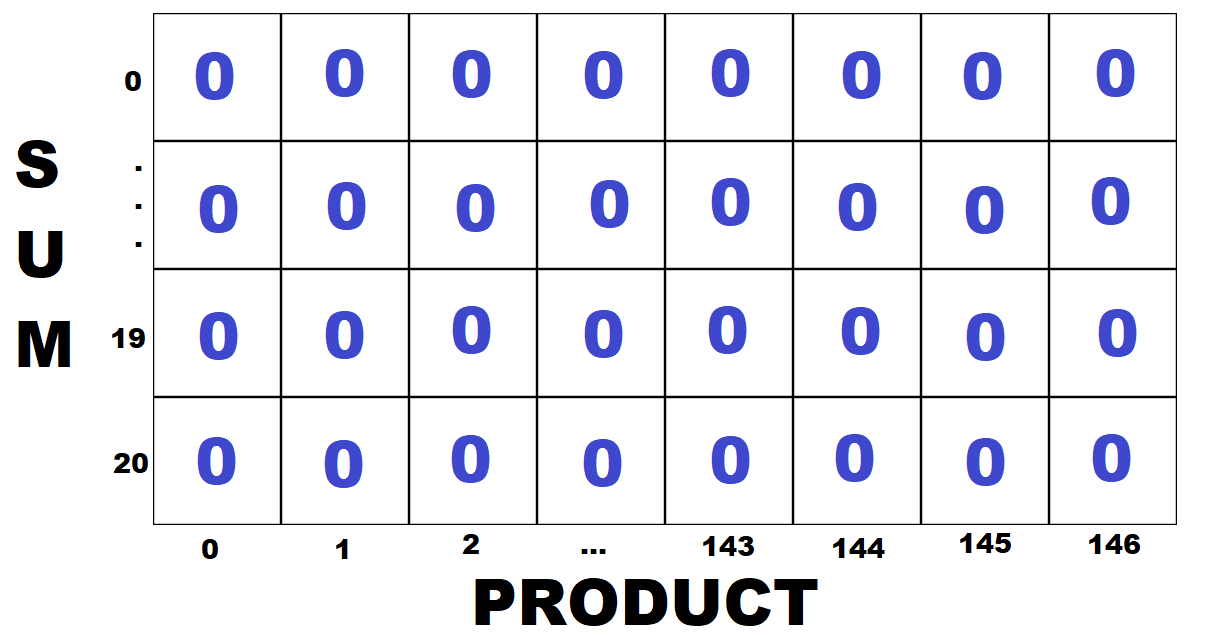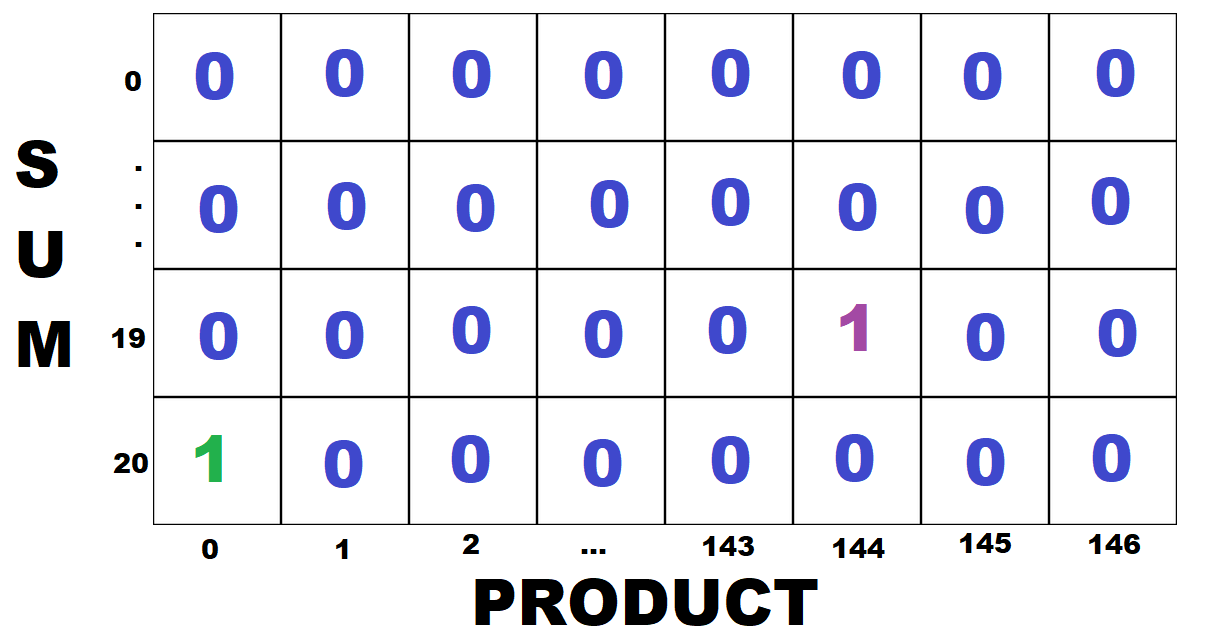|
To see the youtube video where I talk through the solution, click here.
The Problem Statement
The problem statement for July 2018's IBM Ponder This challenge is as follows:
Let's call a triplet of natural numbers "obscure" if one cannot uniquely deduce them from their sum and product. For example, {2,8,9} is an obscure triplet, because {3,4,12} shares the same sum (19) and the same product (144). What We're Trying To Find
Let's restate the problem and make it as simple as possible:
Note that a, b, and c must be natural numbers (integers bigger than zero).
Solving The Problem: The Logic
As far as I can tell, there's no cute mathematical trick to finding out the answer to this problem. So we'll solve this problem with programming.
Basically, our code logic is going to be this: 1. Check every possible triplet (a,b,c). -> Store each triplet's sum/product values. 2. Check every possible triplet (a,b,c) again. -> This time, check if the current triplet's sum/product values are unique, or if they match another triplet's. -> If they match another triplet's sum/product values, then this triplet is obscure. -> Since this triplet is obscure, check if (a+1,b+1,c+1) is obscure. -> If (a+1,b+1,c+1) is obscure, then check if (a+2,b+2,c+2) is obscure. -> If (a+2,b+2,c+2) is obscure, then check if (a+3,b+3,c+3) is obscure. -> If (a+3,b+3,c+3) is obscure, then we found an answer. The Data Structure - A 2D Table/Array
How are we going to actually store each triplet's sum/product values, and how do we check those values later? The data structure we're going to use is a simple 2D Table/Grid. (This is implemented as a 2D array/list/vector in most programming languages.)
Each cell in our 2D table will represent the number of triplets that have a particular sum and product. Each row represents a sum value and each column represents a product value. We'll initialize our table to have all 0's. In step (1) we'll increment each cell as we find a triplet that has a sum/product, and in step (2) we'll check if a cell to see if a triplet's sum/product is unique or not. Let's go through an example to see what this table looks like. Our table is initialized with all 0s.
Let's say we check triplet (0, 8, 12) (even though that's not valid since 0 isn't natural). The sum is 0+8+12=20, and the product is 0*8*12=0. We increment cell [20][0] in the table by 1, representing that a triplet that we've checked has a sum of 20 and a product of 0. Our updated table looks like this:
Let's say that we check triplet (2,8,9) next. The sum is 19 and the product is 144. We update cell [19][144] in our table.
Let's say that we check triplet (3,4,12) next. The sum is 19 and the product is 144. We update cell [19][144] in our table.
And we continue with this process until we check all triplets and update all of our table.
Then in step (2) when we check triplets again, we reference the value of a [sum][product] in the table. If the cell value is bigger than 1 (as the case with triplet (3,4,12)), then the triple is obscure. With this data structure, storing a triplet's [sum][product] takes O(1) time and looking up whether a triplet is unique takes O(1) time. Limitations and Optimizations
Our data structure and programming logic is good enough for the normal problem, but not for a bonus star. Unfortunately, you'll find that memory limitations hold us back.
What size is our table going to be? If we decide to check triplets starting from 1 going up to n, then our maximum sum is n+n+n and our maximum product is n*n*n. That means we need 3*n rows and n^3 columns. That's a total of 3*(n^4) space. So large n's are very tricky. One optimization is to notice that some cells in our 2D array may be unused: we initialize a cell for every possible sum and product, even though they may go unused. A quick fix is to change our data structure: instead of using a 2D array, we can use a hash map or a red-black tree, which will only create a [sum][product] "cell" if it exists. It only changes 3 lines in our code, and helps save some space. The Code
The logic explained before is implemented in the following C++ code:
Notice that the array data structure is implemented (a map in C++), but the red-black tree code is there but commented out, if you'd prefer to try that way. Read through the comments to see the exact implementation.
Final Answer
If you run the above code exactly as-is (which checks triplets starting from 1 up to 100), you'll get five answers. (The code runs instantly and takes up basically no space.)
Four years: {7,30,54}
It's that easy to get a solution this month.
You want the bonus star? Then switch the code to the red-black tree form, change n to go up to 1200, and run the code. It took my computer 10 minutes to fill the table (tree), and 17 minutes to check all of the triplets for obscurity. The program hovered around 12.5 GB of RAM (it peaked at 13.1 GB). If you do that, you'll find that (215, 328, 1053) is a triplet that stays obscure for six consecutive years.
Like this content and want more? Feel free to look around and find another blog post that interests you. You can also contact me through one of the various social media channels.
Twitter: @srcmake Discord: srcmake#3644 Youtube: srcmake Twitch: www.twitch.tv/srcmake Github: srcmake Comments are closed.
|
AuthorHi, I'm srcmake. I play video games and develop software. Pro-tip: Click the "DIRECTORY" button in the menu to find a list of blog posts.

License: All code and instructions are provided under the MIT License.
|





